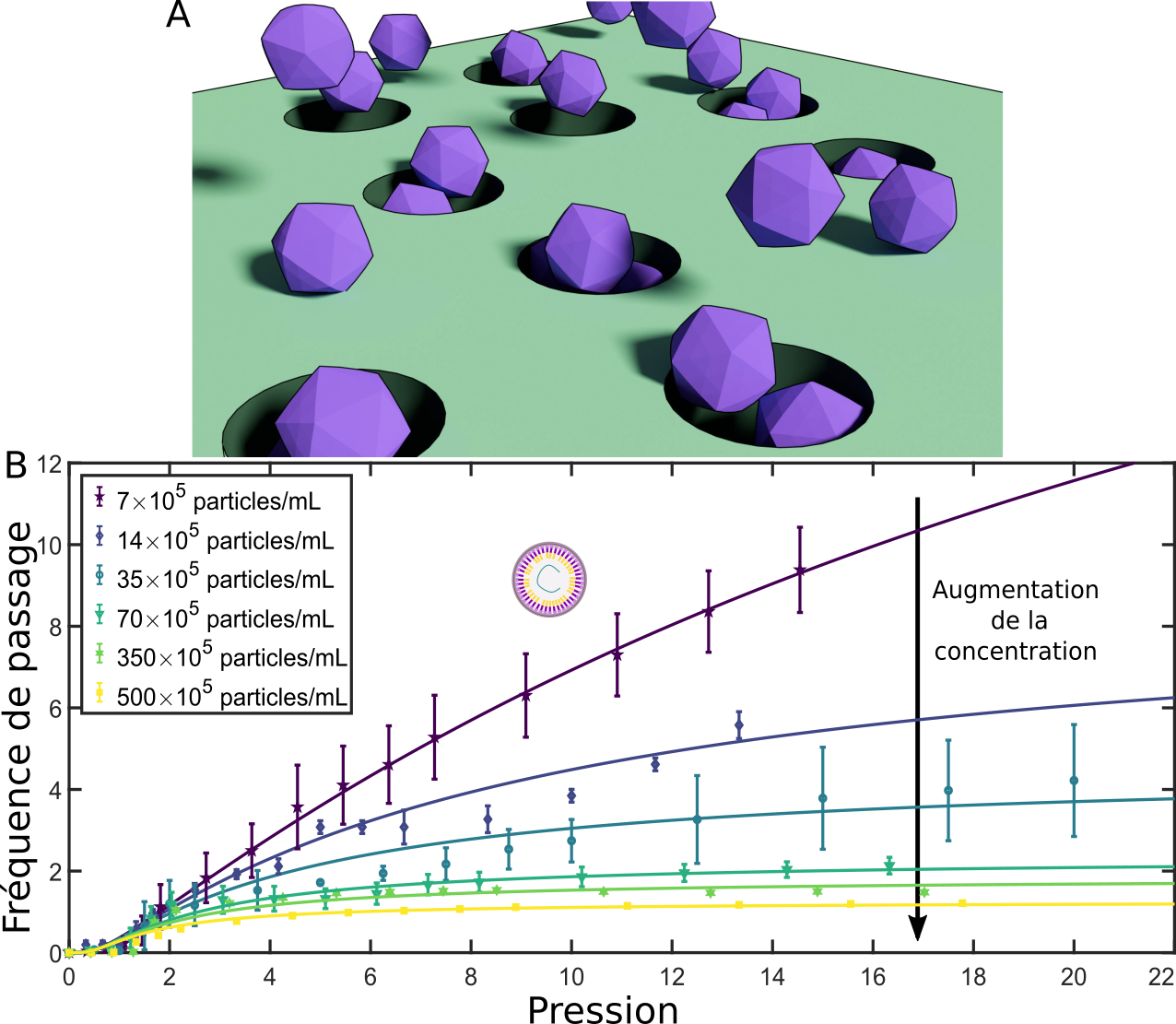Follow us on Google News (click on ☆)

Viruses possess remarkable physical properties and exhibit complex interactions with their environment. Typically, the transport of these pathogens is thought to occur through respiratory droplets emitted by infected individuals, as has been widely popularized by various studies following the emergence of Covid-19.
However, the movement of viruses towards infection sites is complex and highly diverse. To enter the core of cells and infect them, viruses must find their way through environments that are sometimes highly confined. During the critical moment of penetrating the cell nucleus, some viruses must pass through the "gates" formed by nuclear pores located on the surface of the nucleus, a process of utmost importance for understanding viral infectivity.
This critical step has just been studied by teams of scientists from the Physics Laboratory (LPENSL, CNRS / ENS de Lyon), the Research Institute on Infectious Diseases of Montpellier (IRIM, CNRS / University of Montpellier), the Paris Institute of Molecular Chemistry (IPCM, CNRS / Sorbonne University), the International Center for Infectious Disease Research (CIRI, CNRS / ENS de Lyon / INSERM / University Claude Bernard), GULLIVER (CNRS / ESPCI Paris - PSL), and Interfaces, Treatments, Organization, and Dynamics of Systems (ITODYS, CNRS / University Paris Cité), using an in vitro approach mimicking viral transport in the nucleus. To do this, they studied the passage of viruses through synthetic nanometer-sized openings, commonly called nanopores, by observing them using ultra-sensitive optical detection.
Surprisingly, the researchers discovered that viruses tend to interact with each other when they are forced into these pores, and they easily form a traffic jam when the density is sufficient, primarily due to the adhesion between the viruses and the pore surface. Using a physical model, scientists turned this situation to their advantage by showing that this clogging phenomenon can be used to quantify the interactions between viruses and with the pore.

Virus congestion in a synthetic nanopore.
A) Artist's view of virus clogging at the entrance of a nanopore.
B) Measurement of passage frequency through a network of synthetic nanopores as a function of the pressure applied to push the viruses.
The significant reduction in passage frequency with increasing virus concentration is a distinctive sign of the formation of a clog inside the pore. The points represent experimental measurements, and the solid lines represent the predictions of the physical model developed for this study.
© Vincent Démery, Fabien Montel & Léa Chazot-Franguiadakis.
This research thus proposes a new method for understanding and characterizing viral interactions with their environment. For instance, the influence of drugs on the transport of viruses into the nucleus can be tested using such experiments. One could also envision using this technique to control nanoparticle aggregation through a nanopore. These results are published in the journal Nature Communications.
References:
Soft jamming of viral particles in nanopores, Nature Communications, published on July 23, 2024.
Doi: 10.1038/s41467-024-50059-9 (open access)